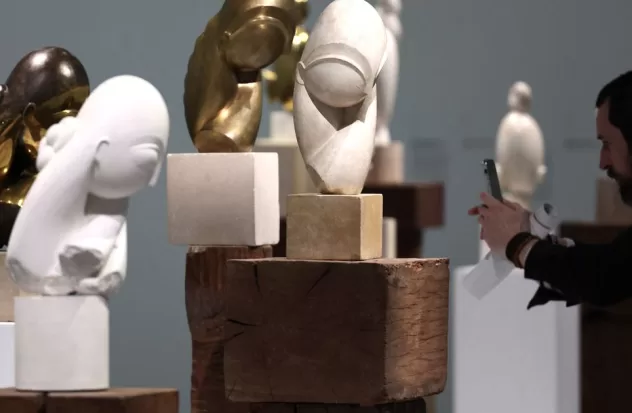PARS.- The Pompidou Center Pars starting this Wednesday, it hosts a historic retrospective of the artist Romanian Constantin Brancusi (1876-1957), who revolutionized sculpture in the first half of the 20th century as his teacher Auguste Rodin had done decades before.
More than 120 sculptures and hundreds of sketches, paintings and documents make up this exhibition open until July 1st.
We must go back to 1995 for an anthology of this size, also in the Parisian museum, which inherited Brancusi’s workshop and the entire personal collection of the sculptor with the mission of preserving them in their entirety.
Brancusi arrived in Paris at the age of 28 from Romania, and quickly joined Rodin’s workshop in 1907, when the author of The kiss He was at the peak of his career.
His art
“Nothing grows in the shadow of large trees,” Brancusi supposedly said after spending just three months, from January to March 1907, in the workshop of the giant of French sculpture. From there Brancusi launched his own refoundation of Western sculpture.
He sculpted wood or marble directly, with vigor, without resorting to molds, and in just 15 years his style was refined, dizzyingly stripped of all ornament, until turning the heads into spherical shapes, with fine lines that barely outline a nose. , or a pair of eyes.
“It is painful to spoil a beautiful material with holes for eyes, hair, ears,” Brancusi explained.
One of the best-known examples of this refined style is The sleeping muse (1910), the patinated bronze sculpture of a bowed female head.
Brancusi had a wealthy client, Baroness Frachon, pose for a pose, who cried with emotion when she saw the result, explains the main curator of the exhibition, Ariane Coulondre.
the exhibition
Thanks to the extensive holdings of Brancusi’s legacy, which make up two-thirds of the exhibition, and loans from abroad, the Center Pompidou is able to present a fascinating journey into the heart of that refined style.
Whether through the series of sleeping muses, or the bust of a child, or the way Brancusi interpreted birds or seals, the visitor can compare the different versions of the same model, how it is refined and changes tirelessly.
“Brancusi went through all the movements of the 20th century. He can be considered one of the fathers of abstract art, without being abstract at all. He never wanted to be part of any movement, to see himself associated with other artists,” explains the curator.
“He sold his sculptures himself, he never wanted to have an agent,” adds the expert.
He hardly gave interviews, but often received in his 180 m2 workshop, where he tirelessly worked and reworked his sculptures.
The Mystery of Princess X
Brancusi made his mark on Western art in just four decades. In 1945, after the Second World War, he practically stopped working. “There is only one known work, from that date,” explains Ariane Coulondre.
Until his death in 1957 he dedicated himself to tirelessly rearranging his workshop. Every time he sells a work, he takes out a mold to place the sculpture back where he was, or takes advantage of that void to reorganize the entire space.
Brancusi did not escape controversies about contemporary art.
One of his most controversial sculptures is Princess X (circa 1932), which looks like a phallus, but which the sculptor insisted was the purest possible version of a woman’s body.
Although Brancusi preferred that the visitor draw his own conclusions. He spoke in aphorisms, without giving clues about his sources of inspiration or his theories.
FUENTE: AFP


